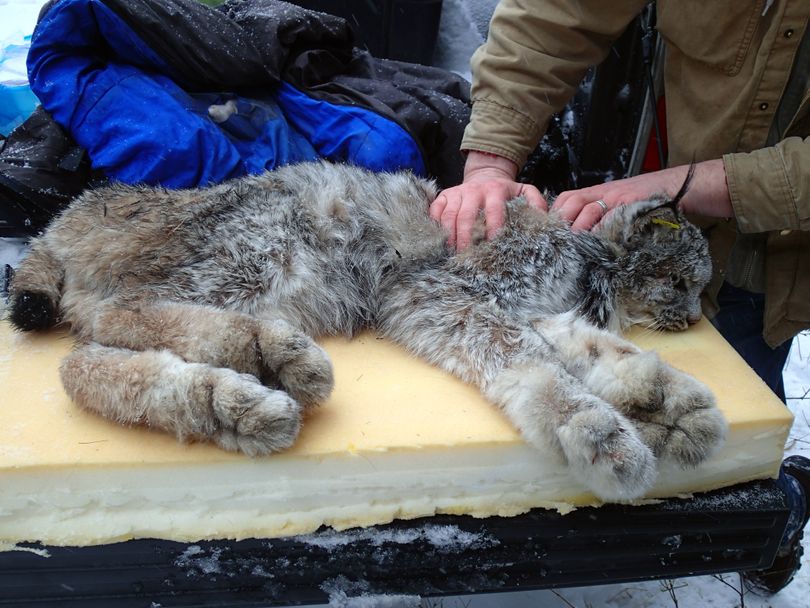Canada lynx trapped in Cabinet Mountains

Two trappers in Idaho’s Cabinet Mountain range had an unexpected catch last week.
The snarling critter they had live-trapped was slightly smaller than a bobcat, with tufted ears and big, furry feet. It was Canada lynx, a rare and secretive forest cat.
The trappers called the Idaho Department of Fish and Game, which sent a team out to collar the 17-pound female. It was a lucky break for the department, which is in the middle of a study on lynx, wolverine and fishers.
“I was surprised that there were lynx in the West Cabinets,” said Michael Lucid, who’s heading up the Multi-Species Baseline Initiative for Idaho Fish and Game. “It shows us how little we know about the animals that live in our forests.”
The initiative is an endeavor to collect information on 20-lesser studied creatures in the Idaho Panhandle and Northeast Washington, so their habitat can be managed to reduce the risk of population decline. Idaho Fish and Game is the lead agency for the five-year study, which also involves other state, federal and tribal partners.
A remote camera in the Purcell Mountains captured earlier images of another Canada lynx. Wildlife biologists were able to collect scat and hair from that animal, which was a male.
But being able to put a satellite-tracking collar on a female is quite a coup, Lucid said. The department will receive email updates on the lynx’s location. And, “we might be able to document kittens in the spring,” Lucid said.
Canada lynx were hunted and trapped until the early 1990s, when population declines became apparent. In 2000, lynx were federally listed as threatened under the Endangered Species Act.
They’re solitary animals, adapted to life on high mountain ridges. Big feet and long legs help lynx navigate deep snows and stalk snowshoe hares, their preferred diet.
Climate change is expected to make life harder for lynx, which occupy a specialized habitat, Lucid said.
Lynx compete with the less snow-adapted bobcats for food. Sparser snow packs and more rain will allow bobcats to expand into higher elevations, occupying territory that was once the exclusive domain of lynx, Lucid said.
